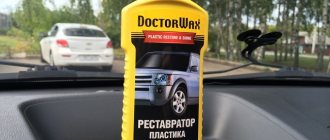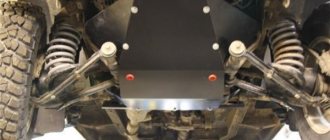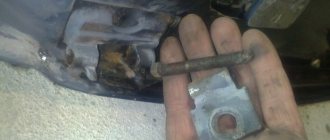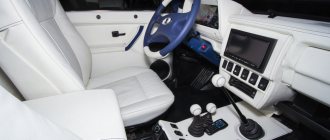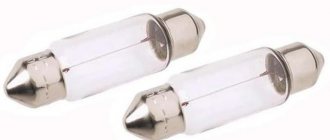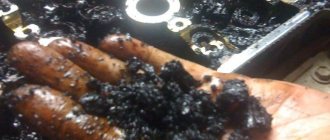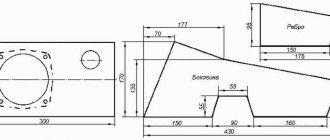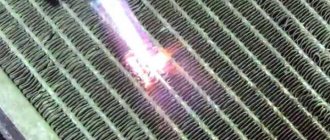Many drivers are well aware that during operation of an internal combustion engine, the lubrication system of the power unit gradually becomes contaminated. Often, contaminants are formed from breakdown products of the engine oil itself.
Also, one should not exclude various malfunctions, as well as common mistakes during internal combustion engine maintenance, which also do not add to the cleanliness of the oil system (engine overheating, antifreeze getting into the oil, mixing oils from different manufacturers, untimely replacement of lubricant, etc.).
One way or another, in such a situation, practically the only accessible and effective way to clean the engine without disassembling it is to use special engine flushes. However, not all car owners practice this approach, since such a solution has supporters and opponents.
In this article, we will look at whether or not to flush the engine before changing the oil, and will also focus on the popular composition, which is known to motorists as Laurel engine flush.
Why do you need to flush the engine oil system?
So, even taking into account that the owner will use high-quality motor oil and change it regularly, contamination in the engine still cannot be avoided.
The only thing is that the intensity of their formation will be reduced. It becomes clear that pollution cannot be avoided. At the same time, it is also clear that it is optimal to remove them in advance for preventive purposes at the initial stage, before any problems begin with the engine (noisy operation, knocking of hydraulic compensators, decrease in pressure in the lubrication system, etc.).
Let us also add that car enthusiasts who change their oil 20-30% ahead of schedule often adhere to the opinion that an engine flush is not necessary when changing the oil. It is based on the assertion that the oil itself contains an active package of detergent additives that wash the engine and lubrication system.
Yes, this is true, but only partially. The fact is that a package of alkaline and other detergent additives is available, but in many cases it is not enough. Detergent additives work after 3-4 thousand km, that is, much earlier than the moment when the driver changes the oil again.
At the same time, above we discussed only motors that were not very dirty to begin with. It often happens that the power unit has a mileage of about 200 thousand km. and more, the oil was changed according to dealer regulations without adjusting for operating conditions, there are doubts about the quality of the lubricant itself, frequent transitions were made from one type of oil to another, etc. In this case, it will take a very long time to wash the engine with oil alone, or it will not be possible to achieve the desired effect at all without using a special engine flush.
Having decided that flushing is necessary, the question arises of which oil system cleaner to choose. You should also take into account some features of using engine flushes and contraindications that also exist. Let's figure it out.
What kind of Hi-Gear soft flush is it for a car engine or reviews about it
Why is this composition called “soft”? It's simple - the additive package in mineral oil is selected in a way that is beneficial for the engine. Unlike express washes, the concentration of aggressive components is lower here, and they work for a long time. In addition, the composition from an American company does not destroy rubber elements - this has been proven by experiments.
About the effect of Hi-Gear soft engine flushing, the reviews are unanimous – positive. For example, here is what Oleg N. from Novosibirsk writes:
“After sitting for a long time, my Subaru Outback suddenly started smoking. I filled up High Gear, but decided not to drive, but to “roll out” 200 km in engine hours. As a result, the car stood for 4 hours, idling. There was much less smoke. And after 50 km of running on the new oil, everything returned to normal.”
Much has been said about the effectiveness of the cleaning product. It is worth noting that this is the most successful deoxidizer of bitumen and oily deposits. His credit is that he does his job slowly. This means that malignant products will dissolve into small substances, mix with oil and, without clogging the meshes and small channels, come out as waste. This is confirmed by Nikolay M. from Tula, who has tried almost the entire Hi-Gear washing line. He formulated his review briefly:
- a soft drug is an effective and harmless thing;
- five-, ten-minute periods - they are washed, but the entire oil system is clogged with sludge;
- Flushing oils clean, but significantly damage camshafts and camshafts.
Laurel engine flushing, instructions, features of use
Do-it-yourself interior dry cleaning products and tools
Let us immediately note that there are a large number of solutions for flushing the lubrication system on the market: Liqui Moly, Lavr, Xado, Hi-Gear, etc. You can also find so-called flushing oil, while in the Russian Federation drivers usually choose Lukoil or Zic.
Given such diversity, we decided to focus on one of the most widely represented and most popular products among engine flushes. We are talking about products under the Lavr brand.
As you can see, the most convenient and widespread is a preparation for flushing the oil system, which:
- poured directly into the mining;
- does not react dangerously with motor oil;
- maintains the required oil viscosity when flushing;
- effectively removes sludge and other deposits;
- does not have a pronounced negative effect on oil seals and seals;
First of all, although manufacturers of washes claim that their formulations do not affect the oil itself and simply improve its cleaning ability, in fact this is not the case. In practice, oil dilution still occurs. This means that you cannot load the engine while using flushing, that is, the unit should only operate at idle. Otherwise, reduced viscosity can lead to accelerated wear and engine failure.
As for the LAVR line of engine oil flushes, experts took this feature into account. As a result, the wash contains a so-called viscosity corrector. In fact, it is a polymer included in the composition that prevents severe liquefaction.
If we talk about the Laurel line of cleaners and rinses, we should highlight the following products:
- Lavr “Classic” five-minute wash for cars and trucks, as well as other types of commercial vehicles. There is also a more intensive 7-minute washing of the Lavr engine.
- Soft flushing of the Lavr engine, designed for the internal combustion engine to be operated under moderate load for 150-200 km.
For a number of reasons, drivers often choose LAVR Motor Flush Soft 200 km. Its main difference is that you can drive with such a wash, it does not evaporate, and it also removes dirt more effectively than 5 and 7-minute “fast” compounds.
In other words, the mild oil system cleaner Lavr allows you to clean the engine for several days over 200 km, being an alternative to flushing oil. In this case, the internal combustion engine is operated under moderate loads during flushing.
LAVR Motor Flush Soft properties and practical test
So, the Motor Flush Soft detergent additive, better known as “soft flushing,” is poured into the engine lubrication system 150 or 200 km away. until the oil change is scheduled. One “portion” of this drug is enough to flush the lubrication system of such an engine, into which 4 to 6 liters are poured. oils
According to the manufacturer, washing delicately removes varnish and bitumen deposits, dissolves thickened gel-like contaminants, etc. At the same time, the presence of dispersants in the flushing composition protects the engine from wear and also helps prevent clogging of the oil system channels, oil receiver mesh and oil filter. Flushing also restores the elasticity of rubber seals and gaskets; the composition is compatible with all types of motor oils.
Let's move on to using LAVR Motor Flush Soft. According to the instructions, the first step is to warm up the engine until it reaches operating temperatures. Next, the flushing is poured into the oil filler neck. After this, the motor should run in XX mode for about 5 minutes.
Then you can drive the car without increasing the speed above 3 thousand, avoiding driving under tension, driving in high gears at low speed, etc. Maximum after 200 km. you need to drain the waste from the engine, replacing the oil and oil filter.
It turns out that you can travel up to 200 km. after adding it to mining it is highly undesirable. In simple words, it is optimal if the engine “travels” these kilometers in the form of engine hours, that is, idling.
Cleaning: how to properly flush a car engine when changing the oil and when is the best time to do it
What to wash with
When the car is new, the problem of how to properly flush the engine when changing the oil does not arise. After all, it does not yet have a solid mileage, the owners say, in addition uttering a phrase about the inappropriateness of the internal combustion engine cleaning procedure. This is partly true, but it is worth remembering that the health of the power plant must be protected from a young age.
Recommendation. To avoid having to wash the power plant, you should pour only high-quality oil from new and not exceed its change interval of 7,500 km.
In the case of a new internal combustion engine, everything is clear. But what to do with contract engines and used cars. The answer is simple - clean the engine and fill it with new, high-quality lubricant.
Nowadays, the insides of the unit are cleaned not with flushing oil, but with catalyzing active chemistry. The special flush is a mineral oil with a package of aggressive additives. It comes in two types:
- five or seven minutes;
- soft (poured into oil 200-300 km before changing it).
Five minutes has a high content of alkaline and other caustic components. Experienced craftsmen express it this way: “It is recommended for use only on new engines or those that have been well cleaned by hand.” Soft flushing fluid causes fewer complaints, and among auto mechanics it is positioned as the only correct option.
How to clean
Initially, the cleaning composition is presented not as a product that washes the engine from the dirt that has accumulated there over several years, but as a detergent to maintain the cleanliness of a new or washed old engine. The conclusion here is that you cannot immediately pour the drug into an internal combustion engine with an unknown service history.
- drain the oil;
- remove the valve cover and oil pan;
- clean the removed elements with aggressive “medicines” (diesel oil, carburetor cleaner, kerosene...) and grinding;
- put everything in place;
- pour oil back;
- Wash the engine for five minutes.
We will analyze the cleaning procedure by rinsing using the LAVR cleaning composition as an example. According to reviews from admirers of the classic LAVR engine flush, the procedure for working with a five- or seven-minute composition looks like this:
- Warm up the engine to operating temperature.
- Turn off the car.
- Pour in the drug.
- Start up the internal combustion engine.
- Wait 5/7 minutes in idle mode.
- Stop the power plant.
- Drain the waste.
Attention! After cleaning with chemicals, the oil is changed to a new one. The filter must also be replaced.
This begs one question: why can’t we do without mechanical cleaning of power plant parts? Here's why: flushing will easily dissolve accumulated deposits in the crankcase and cylinder head. The latter will clog the oil intake screen, which will lead to oil starvation. This is deadly for a regular gasoline internal combustion engine and doubly bad for diesels and turbo engines. The way out of this situation is difficult - it is necessary to completely disassemble the engine and clean it.
It is noteworthy that when changing the oil base (for example, switching from mineral water to synthetic), you should not rinse with store-bought liquids. It is enough to drain the old one, fill in the new one and let the engine idle. Then the lubricant is drained again, the filter is changed, and the updated composition is filled in. You can do it another way:
- update the oil and replace the filter;
- drive 1,500-2,000 km.
Sequence of actions when washing
DIY car interior decoration
First of all, we need “Laurel” - a soft engine flush. It is also advisable to have several liters of gasoline and a special watering can for filling. Murka games. In the proportions indicated on the can, mix “Laurel” and gasoline, after which we find the tube going from the vacuum pump to the intake manifold, disconnect it and inject the mixture there.
It is necessary to start the engine and keep the speed within 2,500 thousand. At the same time, constantly add liquid to the tube. During this time, the engine will be unstable, but this is normal. Carbon deposits and large amounts of smoke may come out of the exhaust pipe. The exhaust at this time will be extremely toxic, so it is better for them not to breathe. We turn off the engine and let it cool, after which it is advisable to replace the spark plugs with new ones if they are no longer fresh. If the spark plugs are new, it is better to use old ones while washing them, as they are very likely to become coked.
Some general information
Currently, there are a huge number of products for cleaning a car engine. There are both foreign and domestic manufacturers who have proven themselves well. In this article I would like to talk about the domestic product for decarbonization - “Lavra”. Reviews about it are more than positive, and many motorists prefer this particular flush. But I would like to immediately note that if the vehicle’s engine needs major repairs, then cleaning it with “Lavr” or any other similar means will no longer help. Only a major overhaul will solve the problem here.
It is worth drawing your attention to the fact that decarbonization can be done with your own hands. There is nothing complicated here, although a lot depends on the design of the car. The more modern it is, the longer it will take. But decarbonization is often performed on engines that have already run a fair amount and are heavily contaminated with carbon deposits. Typically, motorists do the washing themselves, because this will save some money and do everything conscientiously.
About the manufacturers of washes
DIY car interior lighting
One of the most popular liquids with the largest number of positive reviews is “Lavr”. This manufacturer has proven itself to be the best. This liquid must not be poured into the tank, as indicated on the label. According to owner reviews, the average rating for the liquid is 4 out of five. Many people say that you shouldn’t expect a miracle, but the product copes with its immediate task as it should.
Another popular one. Its cost is approximately the same as that of “Lavr” (a little more expensive, but not significant). As for the ratings, it’s also 4/5. True, experts say it is no worse than Winx, but less harmful to health. A product like High Gear is expensive, but it also cleans somewhat better. Well, now let's return directly to our topic.
Let's sum it up
So we figured out how to do and why you need to wash the injectors. “Lavr”, reviews of which all boil down to the fact that the product is worthy of attention, copes with the task completely. However, we must not forget that overuse of such a chemically active liquid can lead to “eating” of rubber seals and seals. For this simple reason, you need to follow the instructions and not come up with anything unnecessary.
Really high-quality washing “Lavr” - reviews repeatedly confirm this. The domestic manufacturer does not produce the product at the lowest cost, but recently its effectiveness has been higher than that of Winx. Also, experts prefer to work with Laurel, which is not surprising, given the health harm caused by Winx.
Operation of the injector will be problem-free if you periodically monitor and clean the system, and also use the “Lavr” flushing fluid. Please note once again that you cannot pour “Lavr” into the tank if it is written on the label! If you do not have any experience in flushing the injector and cooling system, it is better to let specialists do this. But even here you need to be confident in the services of the service station, since there are often cases when they took money from the driver, but did not do their job, and if they did, it was done poorly. Therefore, always be vigilant.
Injector contamination level
As practice shows, not every car owner maintains his car on time. This usually leads to even more serious consequences. An example is injectors. They are responsible for uniform injection of the fuel-air mixture into the cylinder. Over time, both the cylinder and the injectors become coated with carbon deposits, resulting in reduced engine performance. Experts distinguish three degrees of injector contamination:
- 5-7% - almost imperceptible to the driver, since there are no signs of malfunction. Fuel consumption increases slightly.
- 10-15% - twitching is noticeable while driving, a drop in dynamic characteristics, and fuel consumption increases.
- 15-30% is a critical level. Gasoline consumption increases significantly, the engine sputters at idle, and most often stalls when cold.
Based on the above points, we can conclude that the first stage is not so critical, in addition, only an experienced specialist can detect the malfunction. But the lack of action on the part of the driver leads to the second, and accordingly, the final stage. Here the situation is more serious and requires special attention.
"Lavr", decarbonizer: consumer reviews
Many motorists have already tried this product on their engines. Most drivers respond positively to this flushing. Nevertheless, there are a number of nuances that must be observed and which car owners talk about. Firstly, in order to avoid problems with the ignition system, it is recommended to remove the connector from the Hall sensor or short-circuit the central explosive wire to ground. In any case, the vapors should not be allowed to ignite due to a spark. Secondly, immediately after flushing, you need to change the oil in the system. This is a necessary item to complete. The fact is that flushing with sludge settles in the crankcase. Accordingly, during operation, all this will be mixed with lubricant, which is not good.
Most car owners plan to flush immediately before maintenance. If you do all the work yourself, it will be quite affordable. The following reviews and instructions can help a novice driver. Decarbonization of the Laurel engine should also be performed regularly to achieve the most optimal results. In some cases, it makes sense to repeat the procedure.
Why it's better not to experiment
Many people try to carry out various experiments with washings, which in most cases end sadly. For example, the concentration of the rinse is changed. There is no need to do this, since almost the entire point of using the product is lost. It does not give the desired result, but the money is wasted.
In addition, you should not fill in more than necessary, especially if there is little gasoline in the tank. This can lead to the fact that you simply won’t get to the gas station without incident. For example, soft washing “Lavr” at a high concentration has an extremely negative effect on rubber seals, which can subsequently result in replacing gaskets and seals, which is costly.
Active additives - good or bad?
There are a large number of both supporters of chemically active components and those who categorically refuse to use them. Both the first and second are based on life experience, technical knowledge or simply expert advice.
First, you need to understand how flushing works on car systems. Let's highlight the main strengths and weaknesses:
- chemically active components, which can be called aggressive, have a negative effect on all rubber gaskets and seals. This leads to their accelerated wear;
- if the viscosity of the additive does not correspond to the viscosity of the oil, then its use is strictly prohibited, as indicated by the manufacturer on the packaging with flushing;
- Low-quality products for removing oil deposits only make things worse (they clog the catalytic converter, spark plugs), resulting in more problems than they are worth.
That is why not every car owner is satisfied with the result.
Protecting the system after cleaning
There is no need to talk about the quality of domestic fuel. Often, fuel contains a large amount of impurities that exceed all possible standards and environmental tolerances. In some cases, gasoline is diluted, which has a detrimental effect on the fuel system of a modern car. If we add to all this the difficult operating conditions of the internal combustion engine (traffic jams, long-term operation, overheating), then it’s not far from a breakdown. It’s good if you use Lavr engine flushing, reviews of which confirm its effectiveness. But few people use this remedy regularly.
In order for the “iron horse” to work properly, it is advisable to protect the system with special liquids immediately after flushing. If you follow the advice of experienced specialists and the car manufacturer, you can significantly extend the life of important components of the car. This applies to the cooling system, fuel, brake, etc.
In short
- A competent flushing procedure first involves mechanical cleaning of the oil sump and valve cover, only then using auto chemicals. The essence of its application is simple - pour the composition into the oil, let the engine run and, depending on the type of flushing, drive with it. Next, the waste is drained, the filter is changed and new lubricant is refilled.
- When changing the oil base (synthetic - semi-synthetic, etc.), it is advisable to wash it with new oil, which is planned to be refilled further.
- There are accelerated washes and long-acting formulations, called soft ones. The latter have the advantage.
- Reviews of the Hi-Gear soft product are positive. In the technology of how to properly flush a car engine before changing the oil, there are cases when the flushing life is not rolled out in kilometers, but is developed in engine hours. This technology is less harmful to the engine, and the effect is almost the same.
- The LAVR line of automedicines is highly effective. The most popular is the “soft” liquid Motor Flush Soft.
Many drivers are well aware that during operation of an internal combustion engine, the lubrication system of the power unit gradually becomes contaminated. Often, contaminants are formed from breakdown products of the engine oil itself.
Also, one should not exclude various malfunctions, as well as common mistakes during internal combustion engine maintenance, which also do not add to the cleanliness of the oil system (engine overheating, antifreeze getting into the oil, mixing oils from different manufacturers, untimely replacement of lubricant, etc.).
In this article, we will look at whether or not to flush the engine before changing the oil, and will also focus on the popular composition, which is known to motorists as Laurel engine flush.
Read in this article
Why does a car injector get clogged and how to deal with it?
Most chemical compounds found in fuel, such as sulfur, olefin and benzene, form tar deposits in the vehicle's fuel system. They cannot be removed with gasoline, as they are covered with a dense brown crust. The lower quality fuel is used, the more such deposits accumulate in the car over time.
It is quite logical that the overall efficiency of the car decreases, as the injectors become dirty. Due to the fact that complex injector flushing is a rather labor-intensive procedure, many people drive like this until a critical moment comes. The car will start to stall, the engine will run unstably, and some mornings you may not even start. To prevent this from happening, a liquid called “Laurel” is used. In this case, flushing the injector comes down to a few simple manipulations, which we will talk about in this article. It is also necessary to touch upon the engine cooling system.
Regular maintenance is the key to success
We have already figured out a little about what functions “Lavr” performs. Flushing the cooling system, injectors and engine - all this can be done with this product. However, do not forget that to achieve maximum results it is necessary to carry out regular maintenance.
For example, after cleaning the injectors they become dirty again, no matter how sad that may be. As a result, the situation repeats itself. To prevent this from happening, it is necessary to periodically use detergent additives, but not too often. When replacing antifreeze, which is done once every 12-24 months, it is advisable to flush the system as a preventive measure. In the same way, when replacing spark plugs with new ones, you can clean the injectors and the fuel system as a whole. It definitely won’t be superfluous, but you can sleep peacefully.
About the car cooling system
When antifreeze turns an abnormal color, usually bright orange, there is rust in the system. In this case, it is necessary to flush the radiator and all channels. You can do this either independently or at a service station. “Lavr” is suitable as the main remedy. Flushing the cooling system will take quite a long time, since in case of severe contamination the situation will not be improved in one approach.
The first step is to drain the old antifreeze from the system. Next, take “Laurel” and fill one jar, then add distilled water to the minimum. We start the engine and let it run for about half an hour. After that, we drain it and see that there is a lot of rust in the pipes and radiators. It is advisable to repeat the procedure again in the same order. If rust still stands out, then at the third stage we simply use distillate, without rinsing. After the above procedures, fill in fresh antifreeze and enjoy the result.
Composition of flushing additives
To understand whether it is harmful for a car to use this kind of cleaning or not, you need to understand the components that wash the engine and injectors from carbon deposits. The main component is kerosene. It is an excellent cleaner for oil stains. For greater efficiency, chemically active detergents are added, which make it possible to almost completely remove oil deposits on the nozzle channels.
